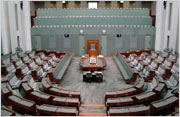Green, Energy - Tesla Runs Island On Solar
Elon Musk is having a big week: On Monday, is Tesla Motors announced it has completed the acquisition of Solar City. Now, the company announced that it has taken an entire South Pacific island over to virtually 100 percent solar power.
It took about a year for Tesla to wean the island of Ta'u in American Samoa from diesel generators to solar. The company created a solar energy microgrid using 5,328 solar panels producing 1.4 megawatts, feeding 60 Tesla Powerpacks that offer 6 megawatt-hours of energy storage. The island is normally very sunny (you know, like most of Australia) and thus is a natural lab for such an experiment, but the Tesla batteries can keep things running for three days should there be abnormally cloudy and dark conditions.
Previously, the island's 300 residents had to burn as much as 600 gallons of diesel fuel per day to keep the generators going. This meant constantly having to have barrels of diesel delivered to the island, and rationing energy use when the shipments were late.
Tesla and Solar City shareholders approved the merging last week, after Mr. Musk proposed it earlier this year. It's a key step towards Musk's "Master Plan" of providing consumers with full-stack solutions for owning their own energy production, storage, and consumption.








 Create PDF
Create PDF Print
Print Email to friend
Email to friend